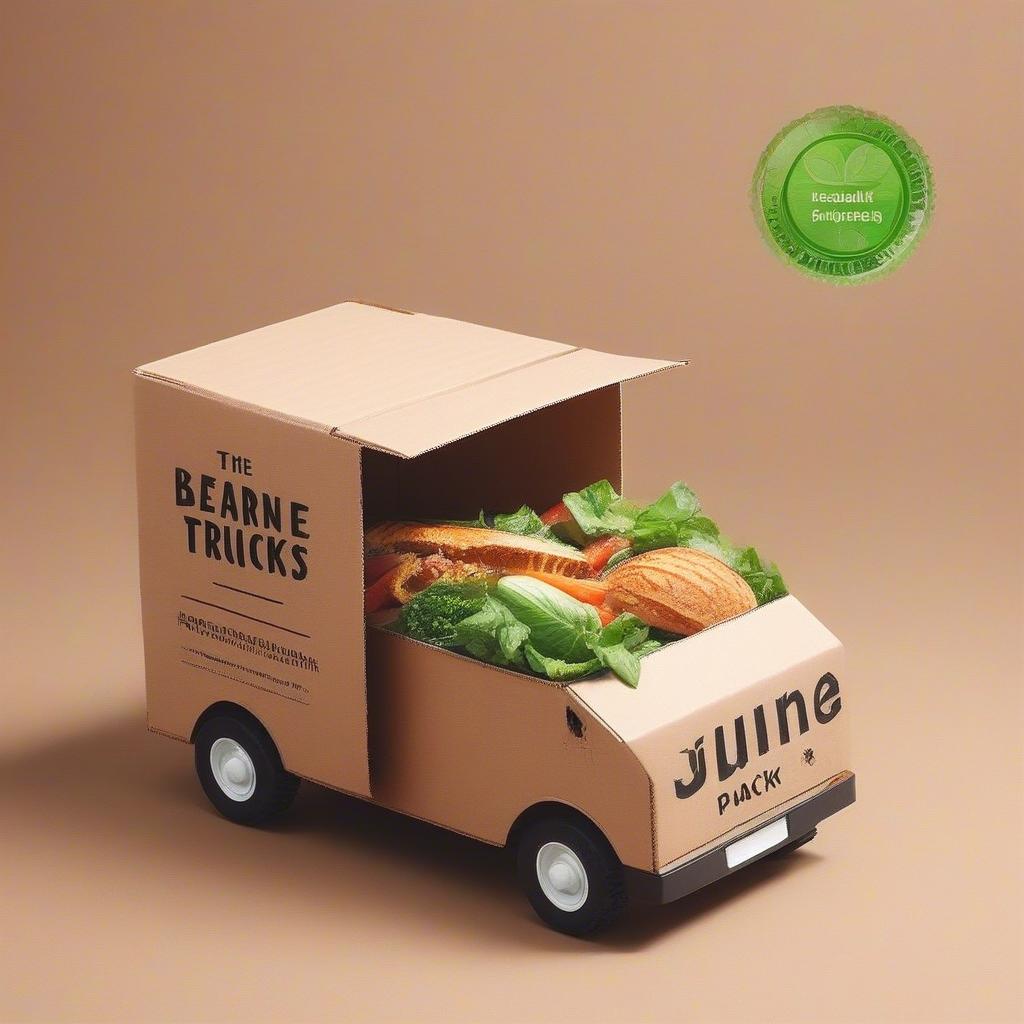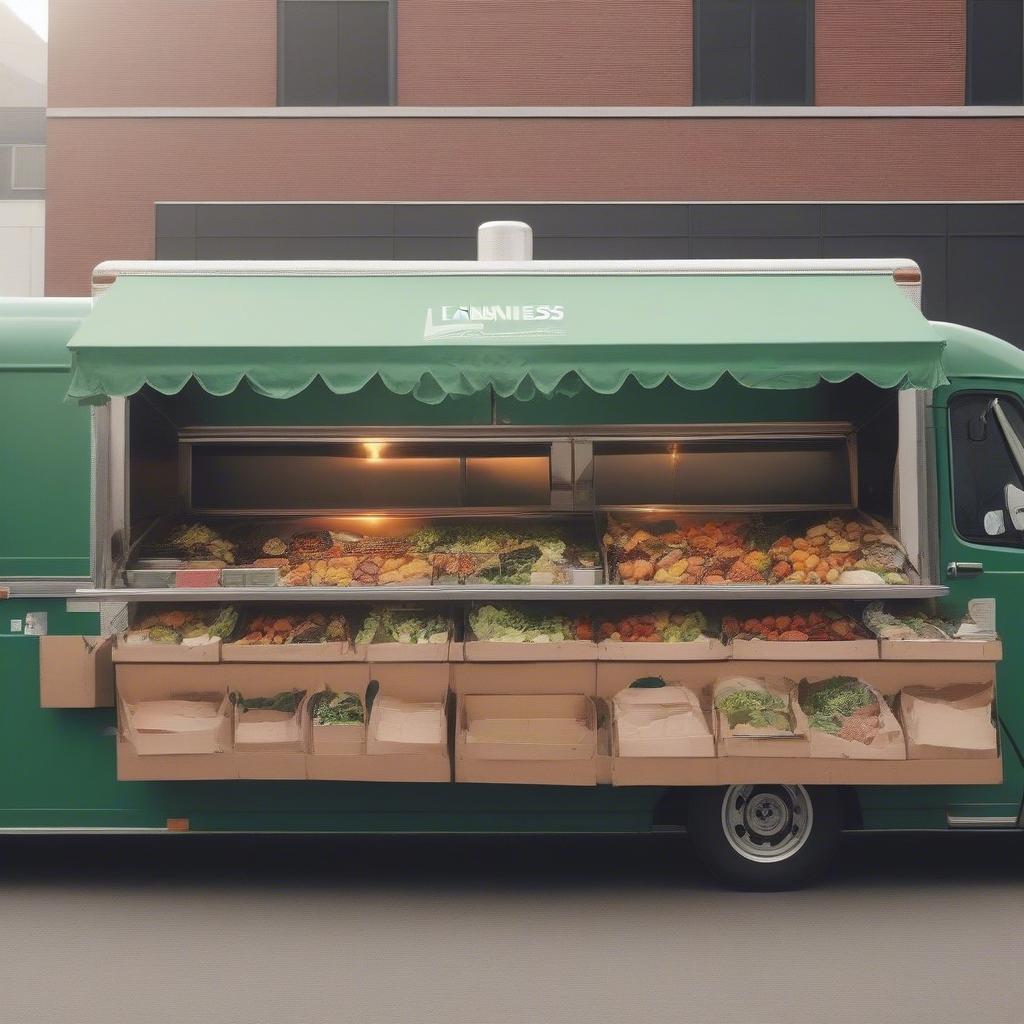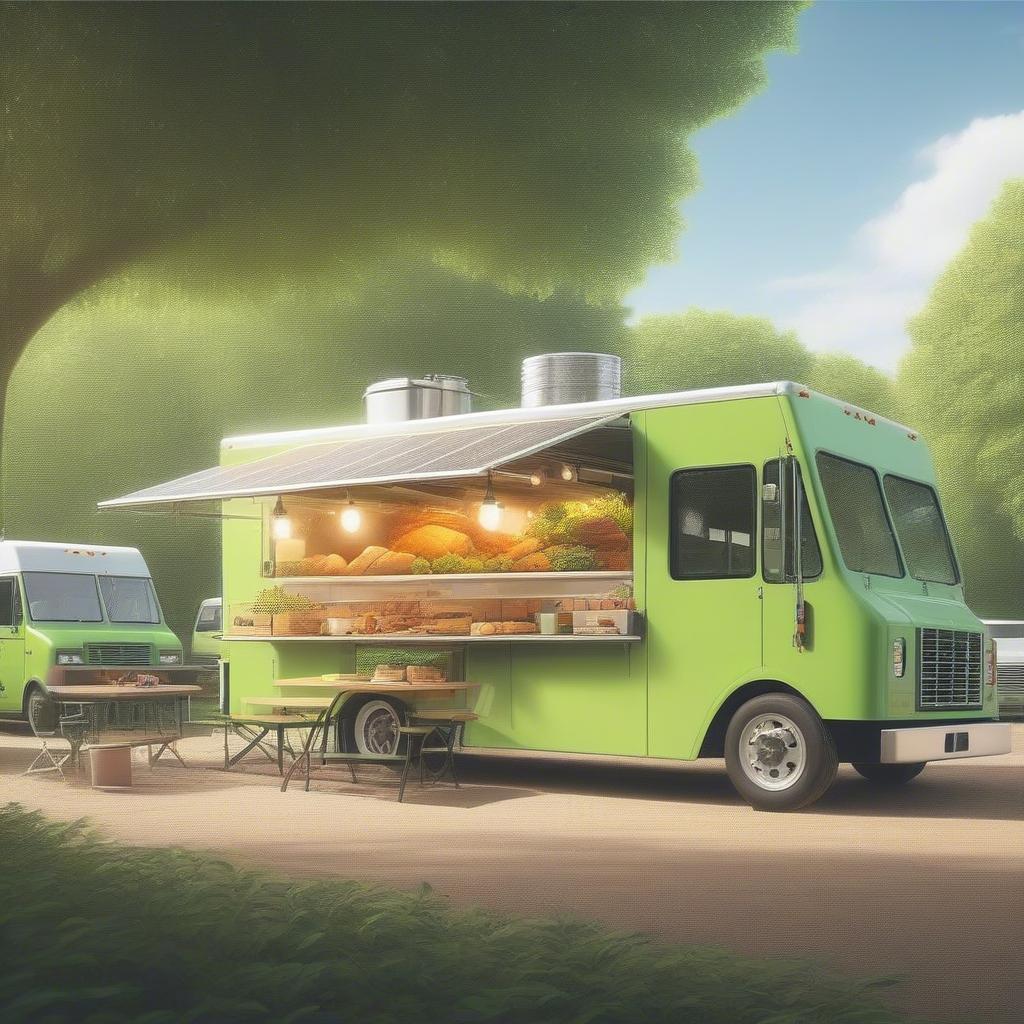
The Ultimate Guide to Conquering Food Truck Festivals
Festivals and events are the lifeblood of a successful food truck business. They’re your chance to reach new customers, showcase your amazing food, and boost your bottom line. But just rolling up isn’t enough. You need meticulous event preparation to ensure a smooth, profitable experience. This guide, packed with years of experience, is your roadmap to dominating the food truck festivals scene and achieving long-term success. Let’s dive in!
1. Pre-Event Planning: The Foundation of Festival Success
Before you even think about firing up the grill, you need a rock-solid plan. This isn’t just about showing up; it’s about strategizing for maximum impact.
1.1 Selecting the Right Events: Not All Festivals are Created Equal
Not every festival is the perfect fit for your food truck. Consider these factors:
- Target Audience: Does the festival’s demographic align with your menu? A vegan festival isn’t ideal for a burger truck, and vice versa. Do your research!
- Festival Size and Type: Is it a small local fair or a huge regional event? Smaller events might mean lower sales but less competition; larger events offer more potential but can be overwhelming. Understand the scale.
- Event Fees and Requirements: What are the vendor fees? Are there specific permits, insurance, or health regulations required? Factor these into your cost analysis.
- Competition: What other food trucks will be there? Is there a market for your unique offerings, or will you be lost in the crowd? Look for opportunities, not just overlap.
- Location: Consider the festival’s location. Is it easily accessible for your truck and customers? Is parking available? Don’t underestimate logistics.
Actionable Tip: Create a spreadsheet to track potential festivals. Include columns for location, date, expected attendance, fees, and your potential profit margin. This will help you make informed decisions.
1.2 Menu Optimization: Less is More, but Delicious
Your everyday menu might not be ideal for a festival setting. Streamlining your menu for efficiency and profitability is key.
- Focus on Bestsellers: What items are your most popular? Stick to these – they’re crowd-pleasers and you know how to prepare them efficiently.
- Keep it Simple: Complicated dishes slow you down and increase the risk of errors. Opt for items that are quick and easy to prepare in volume.
- Consider Portability: Food needs to be easy to eat on the go. Think about hand-held options, wraps, and bowls.
- Offer a Vegetarian/Vegan Option: Cater to a wider audience by having at least one plant-based choice.
- Don’t Forget Drinks: Offer a few simple, popular drinks like bottled water, soda, or lemonade. Don’t get bogged down with complex beverage service.
Example: Instead of your usual 10-item menu, focus on 3-4 of your bestsellers. If you’re a taco truck, offer chicken, beef, and a veggie option, all in the same style.
1.3 Inventory Management: Avoiding the Dreaded Run-Out
Running out of ingredients mid-event is a disaster. Accurate inventory planning is essential.
- Estimate Demand: Look at the event’s expected attendance and make your best guess on how much food you’ll need. Factor in past experiences and event reports (if available).
- Overestimate Slightly: It’s better to have some leftovers than to run out. A slight overage provides a safety net.
- Prep Ahead: Chop vegetables, prepare sauces, and cook proteins as much as possible before the event to save time on-site.
- Use Checklists: Create detailed checklists of everything you need – ingredients, supplies, equipment – to ensure you don’t forget anything.
Tip: Use a cloud-based inventory system to track your stock in real-time. This allows for better inventory analysis and reordering.
1.4 Staffing: The Power of a Well-Oiled Team
Having the right team is crucial for smooth operations.
- Determine Staff Needs: Based on your menu and expected volume, determine how many staff members you’ll need.
- Clearly Defined Roles: Assign clear roles and responsibilities – who takes orders, prepares food, handles money, etc.
- Pre-Event Training: Conduct thorough training sessions before the event to ensure everyone knows their job and how to handle the pressure of a festival environment.
- Positive Team Environment: A happy team translates to a better customer experience. Foster a positive, supportive atmosphere.
Example: For a busy festival, consider having one person taking orders, two prepping food, and one handling cash. Designate a floater for support as needed.
1.5 Permits and Licenses: Avoiding Legal Headaches
Every event has different requirements for permits and licenses.
- Research Thoroughly: Investigate the specific requirements for each event in advance, and contact local authorities or event organizers if needed.
- Secure Permits in Advance: Never leave permits to the last minute. Getting them ahead of time can avoid unnecessary stress and delays.
- Keep Copies On Hand: Bring physical and digital copies of all necessary licenses and permits to the event.
Tip: Create a checklist of permits and licenses required for various event types, making it easy to check off when preparing for the upcoming event.
2. On-Site Execution: Mastering the Festival Day
The planning is done; now it’s time to execute. Here’s how to make the most of your festival day.
2.1 Setting Up Efficiently: First Impressions Matter
Your setup is your first chance to make a good impression.
- Arrive Early: Give yourself ample time to set up and avoid rushing.
- Organize Your Space: Arrange your equipment and supplies in an ergonomic manner to ensure a smooth flow of work.
- Attractive Display: Make your truck look appealing to attract customers. Invest in signage, banners, and clean, organized workstations.
- Prepare for the Weather: Have canopies, fans, or heaters ready, depending on the forecast. Be ready for the unexpected.
- Safety First: Prioritize safety by setting up barriers to prevent customers from entering work areas and keeping fire safety measures in place.
Example: Have a clear pathway for customers, an attractive menu board, and colorful flags to draw attention. A well-lit space is also helpful, especially for evening events.
2.2 Customer Service: Creating a Positive Experience
Customer service is just as important as the food itself.
- Friendly Interaction: Train your staff to be friendly, patient, and helpful with every customer. A warm smile goes a long way.
- Efficient Ordering: Ensure a smooth, efficient ordering process. Consider a streamlined ordering system (digital or physical) to avoid long lines.
- Quick Service: Keep wait times to a minimum. People are often hungry and impatient at festivals.
- Address Issues Promptly: Handle customer complaints quickly and efficiently, always aiming to find a resolution.
- Go the Extra Mile: A small gesture can make a big difference. Offer samples, a friendly wave, or a quick personalized recommendation.
Tip: Create a script for your staff to use to make customers feel welcome and address any possible concerns promptly and professionally.
2.3 Payment Systems: Making Transactions Seamless
Accepting different payment options is key to maximizing sales.
- Multiple Options: Offer various payment methods including cash, card, and mobile payment apps.
- Fast Processing: Ensure quick and reliable payment processing. Slow transactions can lead to customer frustration and lost sales.
- Clear Pricing: Display prices clearly and ensure your staff is knowledgeable about the cost of every item.
- Keep Enough Change: Keep enough cash on hand to make change. Don’t lose a sale because you can’t break a $20 bill.
- Secure Transactions: Protect customer information and use secure payment systems.
Actionable Tip: Implement a mobile POS system that allows for quick transactions and helps keep track of sales in real-time.
2.4 Managing Lines: Keeping Things Moving
Long lines can be intimidating, but proper line management is key to success.
- Clear Signage: Clearly mark the line and the waiting area to avoid confusion.
- Minimize Waiting Time: Ensure fast, efficient service. The less time customers wait, the happier they will be.
- Provide Entertainment: Consider providing music or interactive elements in the waiting area. This makes the wait time feel shorter and more enjoyable.
- Communicate Waiting Times: If the wait is long, inform customers to manage their expectations.
- Use a Queue Management System: Consider utilizing pagers or a digital queue system if the wait times are exceptionally long.
Tip: Use a chalk board or a digital display to give customers information about specials or estimated waiting times.
2.5 Maintaining Cleanliness: Health and Safety Standards
A clean environment is essential for customer satisfaction and safety.
- Regular Cleaning: Regularly clean your work area, equipment, and surfaces.
- Hand Washing: Ensure all staff members frequently wash their hands. Set up a dedicated handwashing station.
- Proper Waste Disposal: Dispose of waste properly and regularly to maintain a clean and hygienic space.
- Food Safety Practices: Adhere to all food safety guidelines, including temperature control and storage regulations.
- Maintain a Neat Appearance: Ensure all staff members are in clean and appropriate attire, including hairnets or hats.
Example: Set up a clearly marked trash and recycling station and have designated staff members responsible for keeping your space clean.
3. Post-Event Analysis: Learn and Improve
The event is over, but the learning continues.
3.1 Sales Data Analysis: Measuring Success
Analyzing your sales data is essential for identifying what worked and what didn’t.
- Track Sales: Keep detailed records of your sales, including which items were most popular and at what times.
- Calculate Profit Margin: Determine your profit margin for each item to see where you made the most money.
- Identify Patterns: Look for patterns in your sales data to make informed decisions about future events.
- Compare with Previous Events: Analyze how this event compares to your past experiences.
- Use Data to Optimize: Use the sales data to improve your menu, pricing, and staffing strategy for future events.
Tip: Utilize a point of sale system that tracks sales data automatically, eliminating manual tracking.
3.2 Feedback Collection: Hearing the Customer’s Voice
Collecting feedback is important for continuous improvement.
- Ask Directly: Encourage customers to provide feedback in person.
- Online Surveys: Use social media or email to send out brief surveys after the event.
- Social Media Monitoring: Monitor social media for mentions and reviews of your business.
- Act on Feedback: Take all customer feedback seriously and use it to make positive changes.
- Address Concerns: Respond to customer feedback and address any complaints you receive.
Example: Include a short survey with every receipt or provide a QR code that takes customers directly to a feedback form.
3.3 Operational Review: Refining Your Processes
Reviewing your operations is just as crucial as reviewing sales data.
- Staff Performance: Evaluate your team’s performance. Identify what worked well and what could be improved.
- Menu Effectiveness: Assess how well your menu performed. Were there any items that weren’t selling well?
- Inventory Management: Determine if your inventory planning was accurate. Did you run out of anything?
- Logistics: Evaluate the efficiency of your setup and breakdown processes.
- Identify Bottlenecks: Pinpoint any areas of your operations that slowed you down or caused issues.
Tip: Hold a post-event debrief with your staff to discuss what worked, what didn’t and come up with improvements for the next event.
3.4 Future Event Preparation: Building on Experience
The goal is continuous improvement. Use your post-event analysis to better prepare for future events.
- Adjust Menu: Refine your menu based on your sales data and customer feedback.
- Streamline Operations: Implement process improvements to increase efficiency.
- Train Staff: Provide ongoing training to your staff to improve their skills and knowledge.
- Update Checklist: Update your event checklists to ensure you don’t make the same mistakes twice.
- Plan Ahead: Start planning for your next event as soon as possible to ensure you are adequately prepared.
Actionable Tip: Create a master checklist of lessons learned and incorporate this into your standard operating procedure for future events.
4. Learn Business Support: Your Partner in Festival Success
Taking on food truck festivals can be challenging, but with the right guidance and tools, you can thrive. Learn Business is here to support your journey. We provide a range of resources designed to help food truck businesses like yours achieve maximum success tips.
4.1 Customizable Templates and Checklists
Learn Business offers a suite of customizable templates and checklists tailored to the specific needs of food truck festivals. This includes templates for:
- Event Planning: A template to track potential events, fees, requirements, and estimated profit margins.
- Menu Optimization: A menu planner designed to optimize your offerings for speed and profitability.
- Inventory Management: A comprehensive spreadsheet for tracking your inventory and avoiding run-outs.
- Staffing Schedules: Tools to create efficient staffing schedules and assign responsibilities.
- Permits & Licenses: A checklist of necessary permits and licenses, specific to your region.
- Post-Event Analysis: A template to record sales data, customer feedback, and operational notes.
4.2 Expert Guidance and Support
Learn Business doesn’t just offer templates; we provide expert guidance every step of the way. Our network of experienced business consultants is here to help you with:
- Strategic Planning: Develop a strategic plan for your food truck business, including event selection and menu planning.
- Financial Management: Improve your financial understanding with tips on cost analysis, pricing strategies, and budgeting.
- Operational Efficiency: Optimize your processes to ensure smooth and efficient operations at festivals.
- Marketing and Branding: Learn how to build your brand and attract more customers.
- Customer Service Excellence: Get expert advice on delivering a top-tier customer service experience.
4.3 Community and Networking
Learn Business connects you with a community of like-minded entrepreneurs. Gain support and motivation, and exchange ideas with other food truck owners.
- Online Forums: Engage in online discussions and share experiences.
- Webinars: Join webinars on topics of interest to food truck operators.
- Mentoring Opportunities: Learn from experienced professionals in the industry.
4.4 Why Learn Business?
- Tailored to Your Needs: Our templates and resources are specifically designed for the unique challenges of the food truck industry.
- Expert-Backed: Our guidance comes from experienced professionals who understand the ins and outs of running a successful business.
- Practical Tools: We provide practical tools and resources that you can implement right away.
- Results-Driven: Our goal is to help you achieve tangible results – increased sales, happier customers, and a thriving business.
- Affordable: Our resources are affordable, making them accessible to food truck businesses of all sizes.
Conclusion: Your Pathway to Festival Success
Preparing your food truck for festivals and events requires meticulous planning, efficient execution, and continuous learning. By following the advice in this guide and leveraging the support of Learn Business, you can transform your truck into a festival powerhouse. Remember, the key to success is to plan thoroughly, execute effectively, and always strive to improve. Use these success tips to navigate the world of food truck festivals and reach new heights in your business. Now, go out there, serve some amazing food, and dominate the scene!



Leave a Reply